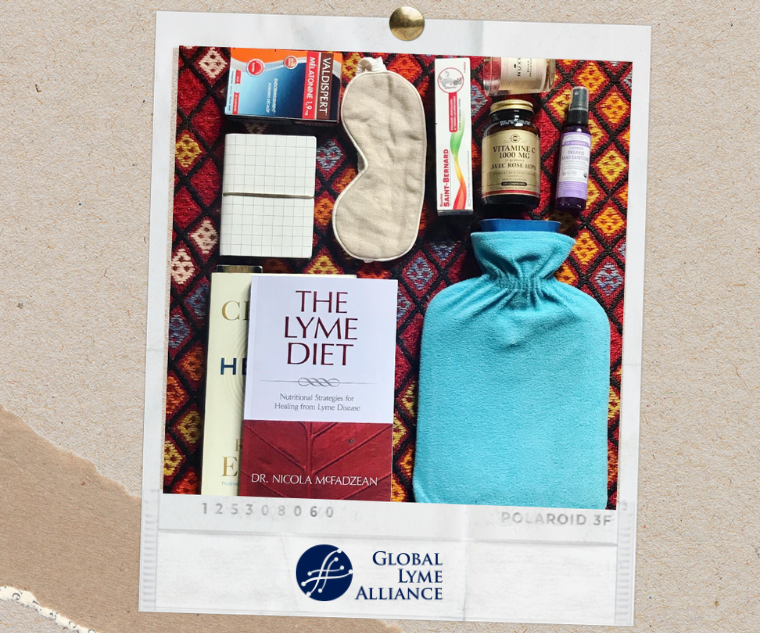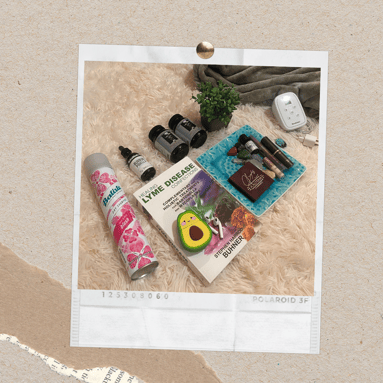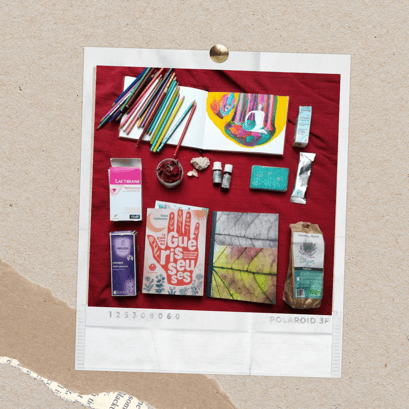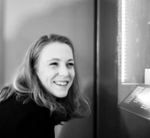
In 2019, I was walking through the new medicine galleries at the Science Museum in London, where I was working as a museum researcher. I looked at the gigantic new display – the largest collection of medical objects on display – when my attention was caught by a very special object. It was not a large one, nor was it a highlight of the new galleries. It was a light therapy lamp. But it was not just any lamp, it was the specific one I used back home, and it was in a museum!
I had just made a connection between my lived experience as someone living with an invisible illness and a museum object.
A lamp is not necessarily the most representative object for my medical conditions, so I started to look around in search for another object that I could connect to, and that is when I found a poster from the 1960s that read ‘normal people don’t need drugs’. The feeling of excitement I had felt suddenly disappeared. How could I survive without medical drugs? Does that make me abnormal?
In this museum, I did not feel represented. But how could a place represent the invisible? Maybe I did not feel like my lived experience was represented because, after all, both my invisible illness and disability are not visible.
I have spent the best part of my life in museums. Maybe you have visited them, maybe you love them, or maybe they are places of trauma for you. The museum is not a neutral place: from imperialism to lack of representation, it is not always a place of contemplation and relaxation. And while some museums are striving for better representation, there are still many who walk in a museum and think: where do I belong? What represents my lived experience in this place?
 This is what I was thinking about when I decided to reuse, and modify, the concept of the museum to create The Lyme Museum, an online museum with touring exhibitions exploring the lived experience of invisible illnesses and disabilities. For its first exhibition in May 2020, The Lyme Museum invited individuals to send flat lays – pictures of objects taken from above – of the objects that represent their lived every-day experience. That hot water bottle that helps you during flares? Those medicines that keep your body stable? That book and journal that help you keep your mental health in check? They are objects that represent individual experiences. When put together, they take up space, in our handbags, our suitcases, our houses and our lives. They might look insignificant alone but put together they are quite literally lifesaving. As it turns out, our illnesses and disabilities are not that invisible: they are made visible through everyday stuff.
This is what I was thinking about when I decided to reuse, and modify, the concept of the museum to create The Lyme Museum, an online museum with touring exhibitions exploring the lived experience of invisible illnesses and disabilities. For its first exhibition in May 2020, The Lyme Museum invited individuals to send flat lays – pictures of objects taken from above – of the objects that represent their lived every-day experience. That hot water bottle that helps you during flares? Those medicines that keep your body stable? That book and journal that help you keep your mental health in check? They are objects that represent individual experiences. When put together, they take up space, in our handbags, our suitcases, our houses and our lives. They might look insignificant alone but put together they are quite literally lifesaving. As it turns out, our illnesses and disabilities are not that invisible: they are made visible through everyday stuff.
If you looked closely, paid attention to the things we carry around, the things we feel anxious about when we don’t have them, you’d realize, it is all visible.
Are these objects worthy of being in a museum? The Lyme Museum thinks so! Anything that represents someone’s lived experience, that makes them feel represented is valuable. Our collective and individual stories have value. Representation matters.
Since 2020, The Lyme Museum collects and displays flat lays online on thelymemuseum.org and shares stories, blogs and resources to create a strong community, and to develop thought provoking online and touring exhibitions. One of the participants shared:
‘Trying to put things from a day in my life has made me think about how I deal with all this, about things people can’t see but I don’t complain about because it’s embarrassing or normally shameful. Aspects of invisible illness can be hard to talk about because it can involve such personal functions day to to day.’
 With over 20 flat lays, artist showcases online, blogs, and an upcoming education hub about inclusion in museums, The Lyme Museum aims to reframe what a museum is all about, and to give a voice to those who have been rendered voiceless, in museums and in society at large. You can participate in this project too, by sending your own flat lay. There is no need to be a photographer, just put on a flat surface some of the objects that represent your experience best, take a picture from above with your phone or a camera, and we’ll do the rest! You can share your personal story too or remain anonymous. Together, we can change the ways that invisible illnesses and disabilities are represented, and before you know it, there will be hot water bottles and heat patches on display in museums!
With over 20 flat lays, artist showcases online, blogs, and an upcoming education hub about inclusion in museums, The Lyme Museum aims to reframe what a museum is all about, and to give a voice to those who have been rendered voiceless, in museums and in society at large. You can participate in this project too, by sending your own flat lay. There is no need to be a photographer, just put on a flat surface some of the objects that represent your experience best, take a picture from above with your phone or a camera, and we’ll do the rest! You can share your personal story too or remain anonymous. Together, we can change the ways that invisible illnesses and disabilities are represented, and before you know it, there will be hot water bottles and heat patches on display in museums!

Dr. Angela Stienne
GLA Education Ambassador
Dr Angela Stienne is a museum researcher, inclusion consultant and writer from Paris. She is an Education Ambassador for the Global Lyme Alliance and the founder of The Lyme Museum.
Website: www.thelymemuseum.org





-2.jpg)
